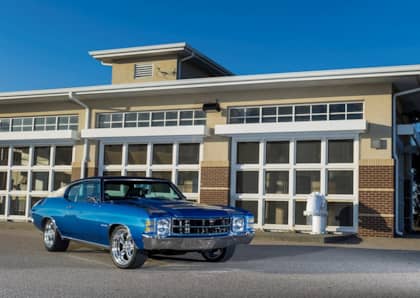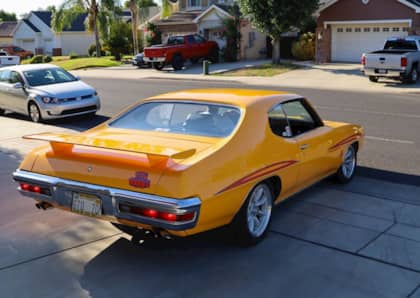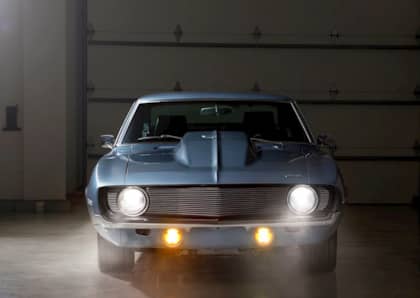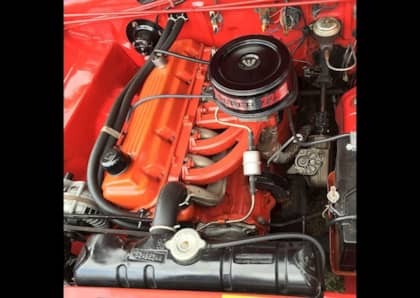Clone Cars Versus Restored Cars: Which Classic Is Right For You?
For decades much of the classic car world has been broken down into two distinct schools of thought: those who believe automobiles should be kept or restored to as original a spec as possible, and those who are willing to mix-and-match drivetrains, trim, and features from a specific era in order to create the vehicle they want to drive.
It's important to mention that the second group doesn't refer to restomods, or the modernization of classic metal. Rather, it's composed of owners who have no qualms about taking a regular Chevelle coupe and transforming it into an SS. The practice is called 'cloning,' and it's been a part of the collector car landscape for as long as the hobby has existed.

In a perfect world, these two groups of enthusiasts would peacefully co-exist, united by their mutual love for all things automotive. In reality, there's a sharp divide that occasionally flashes over into animosity separating the by-the-book restorers from those who play fast and loose with what came from the factory.
Who's right and who's wrong in this debate? It's really not that simple.
The Cult Of Originality?
'It's only original once' is a phrase you'll hear often at any classic car show, cruise night, or fun run. The phrase itself refers to survivor cars that have made it from their original date of manufacture all the way to the present day without any paint work, mechanical updates, or restoration of any kind.
Adjacent to the world of survivors are vehicles that have been restored according to how they were originally built. While these vehicles might see the occasional period-correct modification—aftermarket wheels and accessories, for example—they're sprayed the same color they wore coming off the line, feature an identical driveline, and do their best to present themselves as they would have to a would-be buyer perusing the dealership floor back in the day.

It’s a preservation instinct that works across more than just the desire to keep a car looking showroom-fresh. For many in the restoration camp, it's also about respecting the era the vehicle came from, the designers who put pen to paper, and the engineers who made it all possible. These types of restored vehicles are time capsules forever linked to the period in which they were constructed, which further strengthens the emotional ties on the part of the owner.
There's another aspect of 'original' restorations that has less to do with warm and fuzzy feelings and is more about the cold, hard financial aspects of the collector car hobby. For the most part, restored cars and survivors are valued higher at auction or in private sale than a vehicle that has been modified. It's similar to those who collect first-edition books, rare furniture, or historically significant commercial art: the appeal is the link to the past, compounded by the scarcity of the object being coveted.
It's tempting to view this as a bit of a feedback loop—restored cars appeal to fans of restored cars, who are willing to open their wallets to acquire them—and we'll see later on that things are starting to change in this area.
Attack Of The Clones
Let's say you're less interested in provenance and simply want to enjoy a car that you remember from your youth, or that caught your eye due to its styling, its performance, or simply the image that comes with it. Enter the clones, vehicles that are built from humbler sedans, coupes, convertibles, and roadsters to resemble and drive like rare or more desirable models.

For the most part there's no ill will here, and no desire to pull the wool over anyone's eyes. The driver of the car knows full well that the alligator stitched onto its breast pocket isn't real Lacoste, but they don't care because they're behind the wheel of their dream machine.
Clones are appealing for a number of reasons. They almost always much less expensive to purchase than their original counterparts, particularly for the rarest models (such as Hemi-powered Plymouth Barracudas, or LS6-powered Chevrolet Chevelles). They can also be built to the buyer's spec using period parts or crate engines that replicate drivetrains that were available at the time, and they can usually be modified to take care of any reliability issues or other problems specific to a model (without edging over into the modernization that occurs while building a restomod). Finally, they can be painted any color and have their interiors finished along the same lines, which frees owners from the shackles of a '60s or '70s order sheet.
Why Can't We Be Friends?
Clone builders aren't necessarily in opposition to the idea of nicely-restored car, but the same can't be said for the other side of the equation. Those who worship at the altar of originality have been known to view clones as a dangerous threat to the integrity of the collector car hobby, and some have gone so far as to use the word 'counterfeit' to describe vehicles that have been built to a higher spec than what was original.
While there are some bad actors who clone cars with the intent of deceiving buyers into believing they're paying for the 'real deal,' that represents only the tiniest portion of the collector car world. Indeed, one will find criminals in any industry, and the classic car business is no exception.

Underlying the tension between fans of clones and those who are only interested in original automobiles is the idea that the presence of the former somehow dilutes the value of the latter. For those who view their vehicles as investments, the presence of less expensive versions of the same, that for all intents and purposes look and drive identical to the 'real McCoy,' can feel like a very real threat to their portfolio.
In a sense it's market anarchy, with clones filling the void that can never be completely satisfied by the limited supply of original vehicles. While clones were once ignored by collectors, in recent years they've become a more accepted on the high dollar side of the hobby as supplies of original cars have dried up. The 'value' of a clone is a nebulous concept, but there's no doubt that at some levels these vehicles have been pulling sales away from restored models.

There's one more argument made against clone cars: they tend to cannibalize original vehicles for parts, which leads to fewer restoration candidates left on the ground. While undoubtedly true, buying in to this point of view requires adopting the philosophy that original cars are inherently better than clones. From that standpoint, the sacrifice of a plain Jane coupe that no one would have ever considered investing in as a restoration project is reprehensible. In the real world, it's much more likely to be a wash.
One-Sided Heat
You might have noticed that all of the arguments above are levied against clone owners by those who have restored or original cars parked in their garages. If it appears that clone fans are largely agnostic as to the existence of restorations, then that's not far from the truth.
It's easy enough to understand why this is the case. Given that restored cars base much of their value on being limited in supply, combined with preservation mystique and the fetishization of originality, the presence of a more affordable look-alike, sound-alike, and drive-alike product isn't something that would be welcomed with open arms.

For the most part, clone owners are happy to enjoy their cars and ignore the slings and arrows of the preservationist crowd. If there is one counterpoint that clone fans are willing to make, however, it's that six-figure restorations often end up creating cars that are 'better than new.'
Modern technology and the willingness to spend big bucks of specialized labor ends up creating restored cars that flawless in a way that past production techniques simply could not have achieved. No waves in the paint, no unusual panel gaps, no troublesome overheating—these cars are perfect in a way a factory fresh model never was.
Drive What You Want To Drive
Ultimately, the best classic car is whichever one you want to own, to drive, and to save from the crusher. Spreading the joy of owning an older vehicle is what keeps the entire hobby alive, and seeing these cars and trucks out on the street, or at a car show, or in the parking lot of your local burger joint is what helps ensure future generations stay interested enough to keep the ball rolling.

More than anything else, it's important that old cars be kept fresh in the minds of those who would seek to continue keeping them on the road.
Curious about clones that go out of their way to preserve automotive history? Check out our feature on historically-significant race car recreations.











